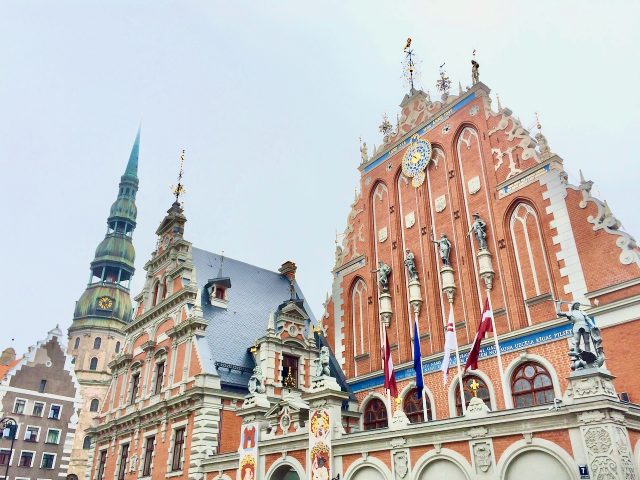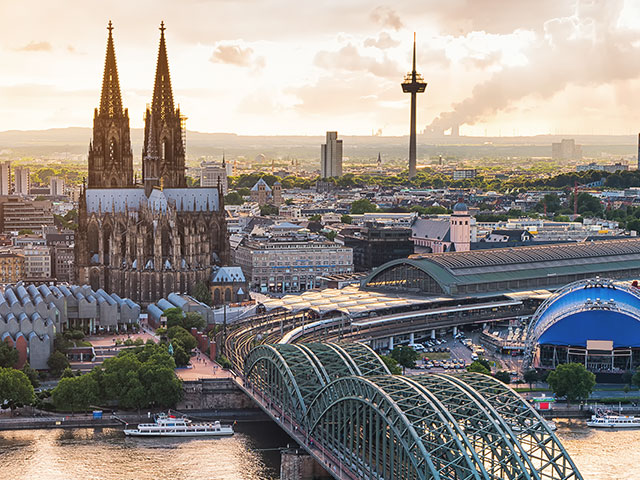 Maastricht (Mestreech in Limburgish, Maestricht formerly in French, Mastrique formerly in Spanish) is
a 121,501
inhabitants city by river Meuse located in the southern part of the Netherlands, being the capital and largest city of the region of Limburg (as well as Meuse-Rhine Euroregion). The city is placed adjacent to the border with Belgium and not far of the border with Germany. It's a thriving cultural and regional hub, becaming well-known through the Maastricht Treaty and as the birthplace of the euro currency
Maastricht (Mestreech in Limburgish, Maestricht formerly in French, Mastrique formerly in Spanish) is
a 121,501
inhabitants city by river Meuse located in the southern part of the Netherlands, being the capital and largest city of the region of Limburg (as well as Meuse-Rhine Euroregion). The city is placed adjacent to the border with Belgium and not far of the border with Germany. It's a thriving cultural and regional hub, becaming well-known through the Maastricht Treaty and as the birthplace of the euro currencyHow do I arrive to Maastricht?
- Train: there are trains that link Maastricht with Den Bosch (aprox. 1 hour 30 minutes), Utrecht (aprox. 2 hours) or Amsterdam (aprox. 2 hours 30 minutes) twice every hour as well as other destinations like 4 trains every hour to Valkenburg (aprox. 12 minutes) and Roermond (aprox. 45 minutes). Maastricht is also connected with Brussels, Paris or Cologne via Liège.
- Bus: there are buses from Maastricht to Valkenburg (aprox. 30 minutes). There are also routes to Germany, like to the city of Aachen (aprox. 35 minutes), Düsseldorf (aprox. 1 hour 25 minutes) or Cologne (aprox. 1 hour 40 minutes); and to Belgium too, with destinations such as Liège (aprox. 40 minutes), Leuven (aprox. 1 hour 40 minutes) or Brussels (aprox. 2 hours).
- Car: if you rented a car from Maastricht you can reach many Dutch destinations like is Valkenburg (aprox. 15 minutes), Roermond (aprox. 35 minutes), Venlo and Eindhoven (aprox. 1 hour), Den Bosch and Tilburg (aprox. 1 hour 15 minutes) or Amsterdam (aprox. 2 hours 10 minutes); in fact many of the closer destinations are in Germany, with Aachen (aprox. 40 minutes), Cologne or Düsseldorf (aprox. 1 hour 15 minutes) and in Belgium with Liège (aprox. 30 minutes), Hasselt (aprox. 40 minutes), Leuven (aprox. 1 hour 10 minutes), Brussels (aprox. 1 hour 20 minutes) and Antwerp (aprox. 1.5 hours).
History
 |
| Maastricht's map |
What can I visit in Maastricht?
- St. Servaas Catholic Basilica (10-17 Mon-Sat and 12:30-17 Sun; 4,50€/ 3€ adults/ retiree and students): Romanesque church with an eclectic mixture of styles, dating back as soon as the year 1000. It's built where St. Servatius of Tongeren (first bishop of Maastricht) was buried and its abse and towers made up of brick are visible from all over Vrijthof. It can also be visited the cloister's garden and the treasury, whose highlight are St. Servatius's reliquary bust and his tomb.
- St. Jaan Protestant Church (11-16 Mon-Sat): 17th century Gothic church with an austere inside. From its flashy red 43 m tower (2.50€/ 1.50€ adults/ kids) there's an excellent view of Maastricht (despite its stairs are a bit claustrophobic).
- Museum aan het Vrijthof (10-17:30 Tue-Sun; 11.50€/ 4.50€/ free adults/ students and kids under 18/ kids under 7): small museum with temporary expositions that are worth to be seen. On its cafe there's a yard and Spaans Gouvernement, where Charles V of Germany (and I of Spain) used to be hosted when he visited to Maastricht.
- Cellebroeders Chapel (guided tours on request): late Gothic chapel, formerly part of a much larger monastery, with an unique vault with the original medieval paintings, beautiful chandeliers and a monumental organ.
- Onze Lieve Vrouwe Catholic Basilica (10-17 Tue-Sun; 6€/ 3€/ adults/ students/ people under 22): Romanesque Mosan style basilica that has a part added in the 19th century by Pierre Cuypens, one of the highlights of Mosan art. The main sightseeing point in the basilica is Our Lady, Star of the Sea.
- Maastricht Nature History Museum (10-17 Mon-Fri, 13-17 Sat-Sun; 7€/ 6€/ 4.50€ adults/ students/ retiree and children): dynamic museums focused on the Carbonaceous period and the Cretaceous Sea with animals of the forested hillsides, the chalk grasslands, and the gravel pit pools or check out the older ‘brown’ section of the museum.
- Bonnefanten Museum (11-17 Tue-Sun; 14€/ 7€/ adults/ students/ kids under 18): main art gallery in Maastricht with an excellent collection of old European paintings and sculptures and Contemporary art from Limburg. There are temporary expositions too.
- Maastricht Underground: complex of tunnels under Mount St. Pietersberg with many different tours: Casemates Waldeck (guided tours; 7.50€/ 5.95€ adults/ kids under 12), 14 km-long network of underground passageways or mine galleries built from 1575 to 1825 used to approach and surprise the enemy during siege (during WW2 it was used as shelter for bombings); North Caves (daily guided tours at 14:15; 7.50€/ 5.95€ adults/ kids under 12), labyrinth of more than 20,000 corridors where the guide shows drawings of people who worked here (manual labourers who cut out the blocks) every day a few hundred years ago as well as various artist (was used as storage of works of arts during WW2) and Zonneberg Caves (weekend guided tours at 14:50; 7.50€/ 5.95€ adults/ kids under 12), network of quarry-tunnels date back centuries but are most intriguing for their occasional charcoal murals and the stories linked to their use in WW2 as a virtual city for hiding the population during times of bombardment.
- Fort St. Pieter (daily guided tours at 12:45; 7.50€/ 5.95€ adults/ kids under 12): strong five-side fortress surrounded with a deep trench from 1710 that is part of the defensive system of the south of Maastricht, connected with Maastricht Underground.
- Jesuit Caves (guided tour booking on advance; 7.50€): unique underground museum (1860-1960) in the corridors of the Cannerberg built for Jesuits scholars and theologians spent their leisure time, creating charcoal drawings, coloured paintings, sculptures and statues resulting in a unique collection of art pieces.
 |
| Valkenburg Castle ruins |
Where can I do and eat in Maastricht?
 |
| Boekhandel Dominicanen |
Maastricht has many good restaurants and places to eat, many of the best ones located around Tongersestraat, Rechtstraat, Vrijthof or Onze Lieve Vrouweplein. In case your budget is reduced you can enjoy the bakery Bisschopsmolen () or the fast-food cafe Friture Reitz (Mark 75). In case you want to spend some more money and your budget is medium, these are the recommendations: Marres Kitchen () specialised in Mediterranean food, the Belgian restaurant Witloof (), De Brandweerkantine () specialised in fusion food and the Dutch restaurants Café Sjiek () and Eetcafe Ceramique ().
The city has an interesting and varied cafe scene with places like Cafe In den ouden Vogelstruys (), Cafe de Pieter (), De Gouveneur (), Zondag () or the brand Coffeelovers.








 15:18
15:18
 Banknotemaniac
Banknotemaniac


 Posted in:
Posted in: